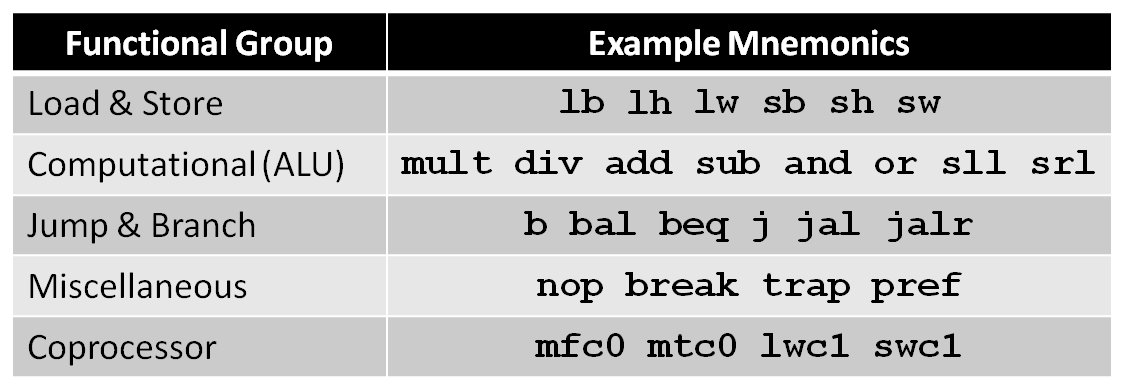Instruction Categories
MIPS32 Release 2 Central Processing Unit (CPU) instructions are organized into the following functional groups:
- Load and Store: Used to load/store operands from memory to/from the General Purpose Register (GPR)
- Computational: Arithmetic, Logic and Shift operations performed on integers represented in two's complement format
- Jump and Branch: Instructions that modify the Program Counter (PC)
- Miscellaneous: Exception handling, conditional move, Cache Prefetch, NOP
- Coprocessor: Instructions that deal with the coprocessor units
The following table provides some example assembly language mnemonics for these categories:
MIPS32 Release 2 CPU Instructions are fully documented in MIPS® Architecture For Programmers Volume II-A: The MIPS32® Instruction Set.
Macro Instructions
Most MIPS assemblers will synthesize a set of macro (also called synthetic or pseudo) instructions intended to simplify the task of writing MIPS assembly language programs.
Every time a programmer specifies a macro instruction, the assembler replaces it with a set of actual MIPS instructions to accomplish a task.
For example, let us suppose a programmer used the load-immediate (li) macro instruction to load a 32-bit constant into a register:
li s0, 0x1234AA77
The MIPS assembler would then insert the following two MIPS instructions to accomplish the task:
lui s0, 0x1234 ori s0, 0xAA77Some pseudo-instructions require a temporary register for intermediate calculations. Assemblers use register at for this purpose.
The mere existence of "macro" assembly instructions should be a warning sign to budding MIPS assembly language programmers - MIPS machine code might be rather dreary to write!
This article provides a list of commonly synthesized pseudo-instructions.

